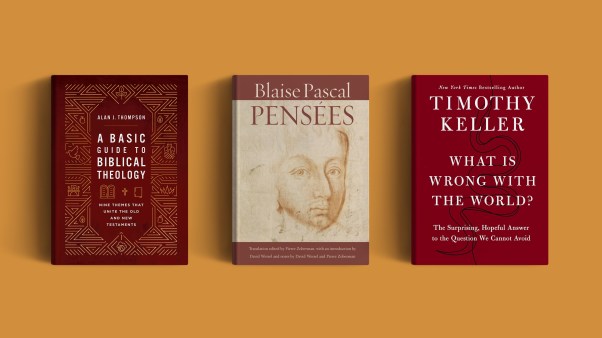When investigating the origin of church-state collaboration, most Westerners look back to Constantine and the 313 Edict of Milan, which made Christianity the favored religion in the Roman Empire. But Christianity likely achieved state-approved status even earlier in Armenia, where celebrations this year will commemorate 1,700 years of faith.
According to legend, in 301 Gregory the Illuminator (so named because he “enlightened the nation with the light of the gospel”) ascended from a stone pit after 13 years of imprisonment for refusing to renounce his faith. He then cured Armenia’s King Tiridates III of madness and converted him to Christianity. Gregory went on to establish the church in Armenia on the spot where he saw Christ descend in a vision. In all his efforts, Gregory built on the groundwork laid by the apostles Thaddeus and Bartholomew, who reportedly preached the Gospel in Armenia as early as the first century.
(Note: Recent scholarship suggests that most or all of Gregory’s accomplishments are more accurately dated to the years between 313 and 316, meaning Rome was actually first to convert, but Armenia’s sticking with 301 because the year “has always traditionally enjoyed the character of official acceptance.”)
Throughout the fourth century, the church in Armenia integrated itself with local life. By the middle of the fifth century, the Armenian epic writer Yeghishe could assert that Christianity had become for the people of Armenia “as the color of the skin and not like a garment.” The creation of an Armenian alphabet in 406 and subsequent translation of the Bible and other holy works greatly advanced this process. Indeed, the fifth century translation movement is commonly called the “Golden Age” of Armenian history.
The fifth century witnessed another pivotal event for the Armenian church: the 451 Council of Chalcedon. Like the 325 Council of Nicea, Chalcedon concerned itself primarily with defining the nature of Christ. Nicea had confirmed, contra Arius, that Christ was “true God of true God” and that his person encompassed both human and divine natures. Constantine, who presided over the council, thought the matter was settled, but western theologians disagreed with their eastern counterparts on how the two natures interacted.
In 449 a council of eastern bishops met in Ephesus and emphasized Christ’s fundamental unity; whether or not some went so far as to endorse Monophytism, the idea that Christ’s divine nature wholly subsumed his human nature, is still debated. On behalf of the westerners, who emphasized the distinction between Christ’s two natures, Pope Leo I denounced the council at Ephesus as a “robber synod” and called the Council of Chalcedon. The western view prevailed at Chalcedon, but five eastern churches—Armenian, Coptic, Syrian, Ethiopian, and Indian Malabar—refused to accept the council’s declarations. These “Oriental” or “non-Chalcedonian” churches separated from both the western (eventually Catholic) and eastern (eventually Orthodox) churches. Armenians reunited with the latter in 1990.
Armenians’ solid grasp of their identity and heritage sustained them through centuries of turmoil. In 451, at the Battle of Avarair, Armenains faced Persians determined to force them to convert to Zoroastrianism. The Armenians lost the battle but held on to their faith. In 484 the Persians granted them religious freedom, but Armenia remained under Persian rule until 684. Arabs controlled the region from 654 to 851.
Armenians then experienced periods of independence before being absorbed into the Muslim Ottoman Empire, which subjected them to persecution and even the twentieth century’s first act of genocide. “Who now remembers the Armenians?” Turks scoffed in 1915. And just when Armenians thought their lot might finally improve, they were taken over by atheistic Russians. “We have been part of at least 30 empires,” says Vrej Nersessian, the Armenian specialist at the British Library. “It is such a long history that time does not matter.”
This attitude toward time, along with the corollary that continuity is more important than change, may be catching up with the Armenians. Their liturgy is essentially that of Basil (330-379) and still conducted in classical Armenian, which very few parishioners understand. The church relies on just three seminaries, in Jerusalem, Armenia, and Lebanon, to train clergy, and as a result many Armenians—including the million or so in America—have only nominal church leadership. Archbishop Vatche Hovsepian of Burbank, California, notes that for many Armenians religion is “a custom, not a conviction.” Linda Maxwell, another Californian who works with Armenian youth, says many of the teens wear crosses but have no idea what the symbol represents.
A 1,700-year heritage of faith is a wonderful thing and well worthy to be celebrated. But this heritage will mean little unless the Armenian church begins looking to the future as well.
Elesha Coffman is associate editor of Christian History.
Copyright © 2001 Christianity Today. Click for reprint information.
Related Elsewhere:
Other media coverage of the anniversary includes:
Rare relics — The Guardian (Jan. 15, 2001)
A Faith Tested Through 1,700 Years — The Los Angeles Times (Jan. 13, 2001)
Armenians Carrying A 1,700-Yr.-Old Flame — New York Daily News (Jan. 6, 2001)
Christian History Corner appears every Friday at ChristianityToday.com. Previous Christian History Corners include:
This Is Your Life | Exploring the “well-worn sawdust trail” between fundamentalists and evangelicals. (Jan. 19, 2000)
The Heavens Declare the Glory of God | Like Paul, Galileo believed that God made himself known through creation. (Jan. 5, 2000)
Festive Flora | Deck the halls with boughs of pagan significance, falalalala, lalalala. (Dec. 22, 2000)
Peace on Earth? | Christmas Carols and the Civil War (Dec. 15, 2000)
Why December 25? | The month and day of Christ’s birth have been hotly disputed for centuries. (Dec. 8, 2000)
The Book Everyone Should Buy | Or at least know about, anyway. (Dec. 1, 2000)
The Saga of St. Chad | A tale of political maneuvers and positioning. Sound familiar? (Nov. 22, 2000)
Accidental Radical | Jan Hus’s ideas seem normal now, but in his age they were revolutionary enough to merit death. (November 17, 2000)
Top 10 Reasons to Read This Book | A list of Christian books that changed the century introduces authors and their impact on evangelicalism. (Nov. 10, 2000)
The Un-Denomination | The Southern Baptist Convention has been historically Un-Conventional. (Nov. 3, 2000)
Soul Crisis at the Conference on Faith and History | Academics gather asking questions like, “What does ‘Christian history’ actually mean?” (Oct. 27, 2000)
Case of the Missing Relic | A piece of Jesus’ cross is stolen from a Toronto cathedral—or is it? (Oct. 20, 2000)
The Politicians’ Patron | Is Thomas More a saintly model? (Oct. 13, 2000)
General Revelations | Reconsidering Robert E. Lee and Ulysses S. Grant. (Oct. 6, 2000)
Olympia Revisited | Christianity and the Olympic Games were once competitors, but at other times have been on the same team. (Sept. 29, 2000)
Weighty Matters | Gwen Shamblin’s teachings sound an awful lot like some in the early church—and not in a good way. (Sept. 22, 2000)








